Cartier-Bresson: A Question of Colour
The likes of The Sartorialist, Style Bubble and the miasma of street style blogs sashaying through the internet have a lot to thank Henri Cartier-Bresson for.
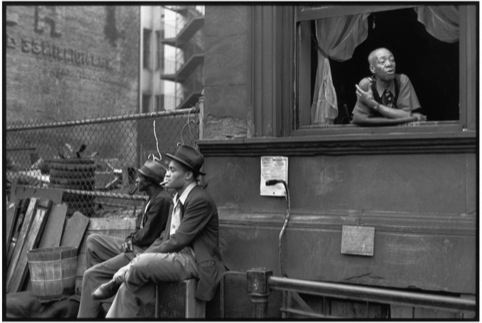
Source: © Henri Cartier-Bresson/Magnum Photos, Courtesy Fondation Henri Cartier-Bresson
Henri Cartier-BressonHarlem, New York, 1947Gelatin silver print / printed 1970s
As, of course, does modern photo-journalism.
French photographer Cartier-Bresson is, for many, considered the grand-père of modern photojournalism, coining a signature style of photographic reportage which it’s hard to imagine life without in the 21st century.
Famed for his black and white images and distinctly candid aesthetic, his first photojournalist shots were published in 1937 when he covered the coronation of King George VI for French magazine Regards, without actually photographing the king. Instead, it was the people lining London’s streets who attracted his lens, capturing the real essence of the occasion.
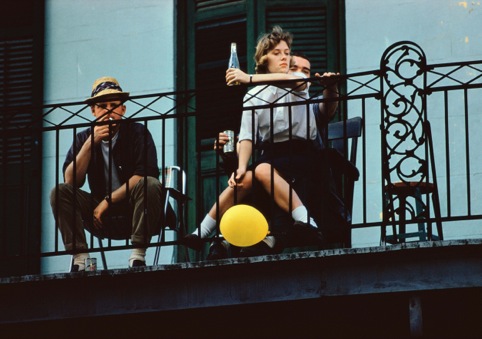
Source: ©Ernst Haas Estate, New York??
Ernst HaasNew Orleans, USA, 1960
It’s this knack of finding the real interest of an image that’s inspired generations of photographers since, as a new exhibition at Somerset House illustrates.
Cartier-Bresson: A Question of Colour, curated by William A. Ewing, shows ten Cartier-Bresson photographs never before exhibited in the UK alongside more than 75 works by international photographers who he’s influenced.
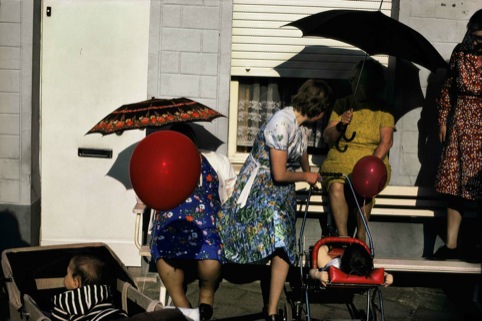
Source: © Harry Gruyaert
Harry GruyaertBelgium, Flanders region, Province of Brabant 1988
They include Karl Baden (US), Carolyn Drake (US), Harry Gruyaert (Belgium), Ernst Haas (Austria), Fred Herzog (Canada).
The 15 photographers have been selected due to their use of colour, referencing Cartier-Bresson’s well-publicised disparagement of colour photography. The chosen artists are seen to use colour within the scope of Cartier-Bresson’s ethos of capturing ‘the decisive moment’ of the occasion with his images.
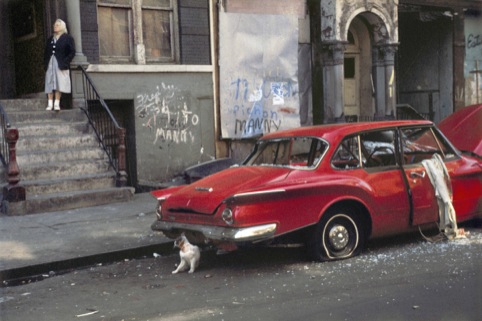
Source: © Estate of Helen Levitt
Helen LevittCat next to red car, New York, 1973
Ewing says, ‘This exhibition will show how Henri Cartier-Bresson, in spite of his skeptical attitude regarding the artistic value of colour photography, nevertheless exerted a powerful influence over photographers who took up the new medium and who were determined to put a personal stamp on it’.
He adds, ‘In effect, his criticisms of colour spurred on a new generation, determined to overcome the obstacles and prove him wrong.’
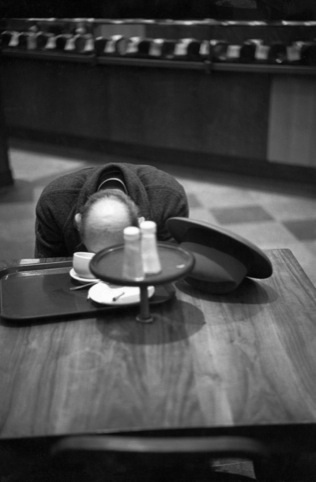
Source: © Henri Cartier-Bresson/Magnum Photos, Courtesy Fondation Henri Cartier-Bresson
Henri Cartier-BressonBrooklyn, New York, 1947
The exhibition is the first to be staged by the Positive View Foundation, a charity that was founded last year to stage photography shows and support education projects that use photography to support disadvantaged young people through training programmes.
Cartier-Bresson: A Question of Colour runs until 27 January 2013 at Terrace Rooms & Courtyard Rooms, Somerset House, Strand, London, WC2R
For more information visit positiveviewfoundation.org.uk
-
Post a comment




